1
Login to the Platform
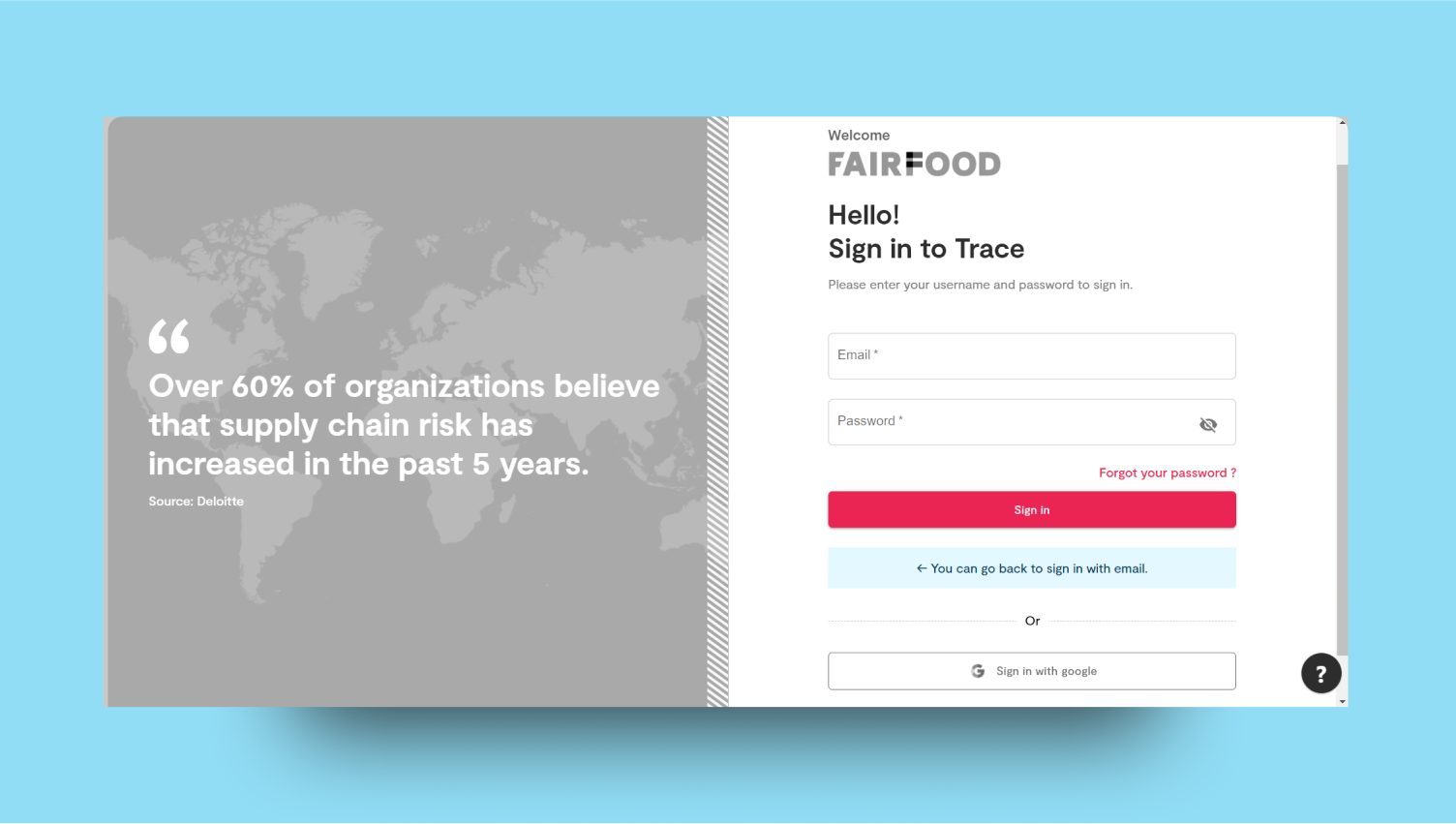
2
Navigate Dashboard
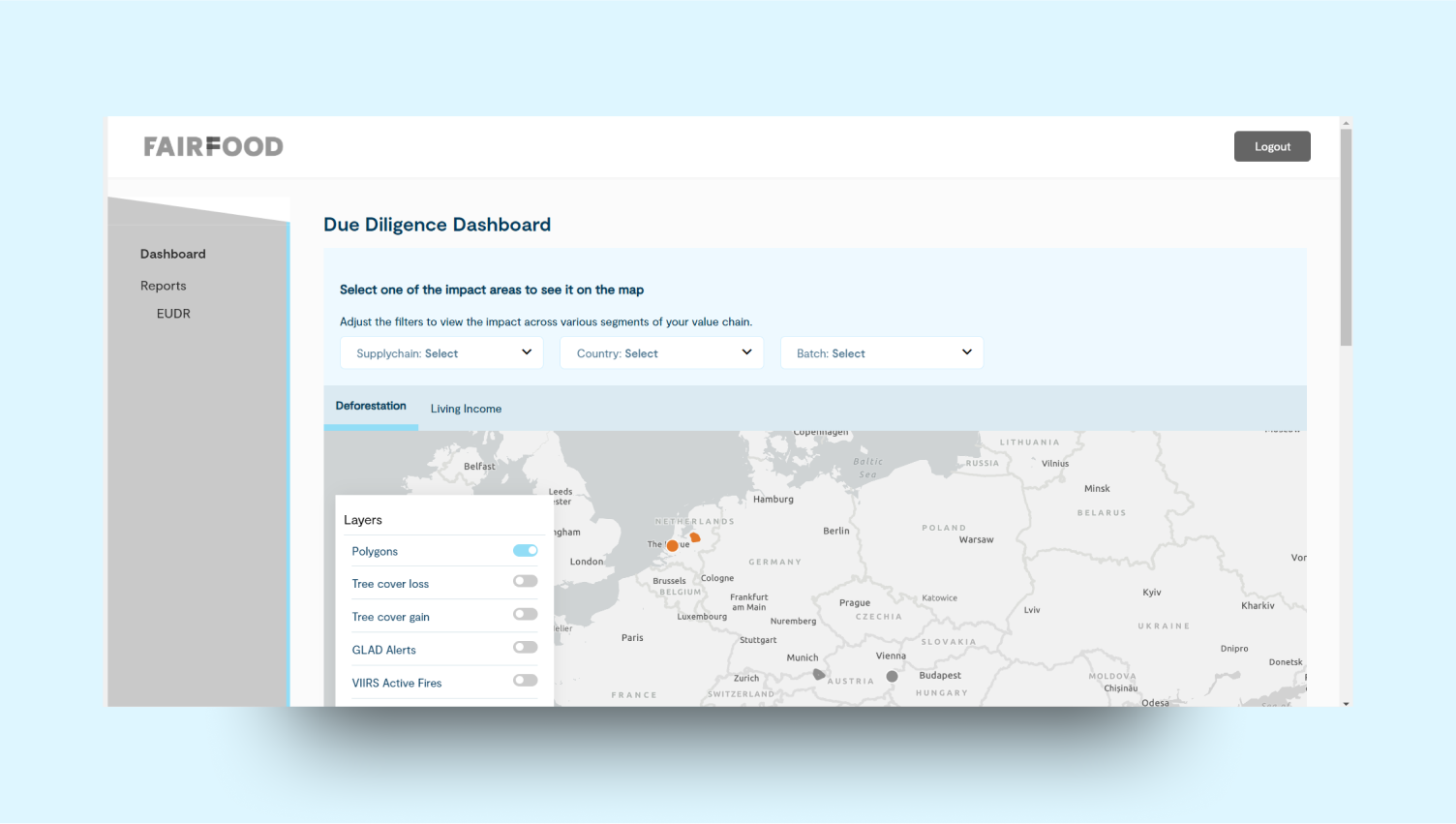
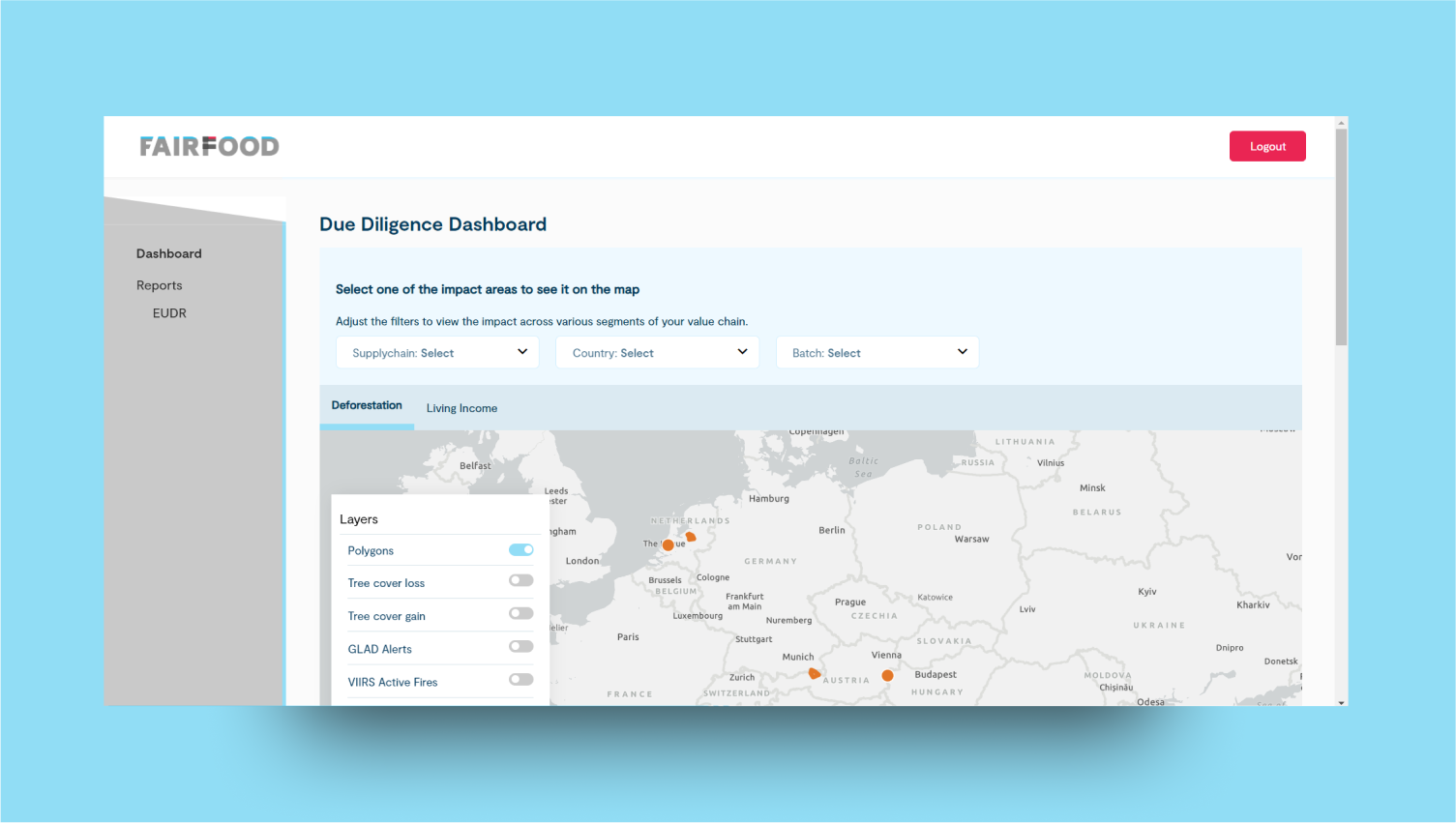 Navigate is a platform designed to monitor key areas like deforestation, living income, emissions, biodiversity, and human rights. Users can switch between these categories to track and analyze data for each. The platform provides insights and tools to help manage and address environmental, economic, and social challenges effectively.
Navigate is a platform designed to monitor key areas like deforestation, living income, emissions, biodiversity, and human rights. Users can switch between these categories to track and analyze data for each. The platform provides insights and tools to help manage and address environmental, economic, and social challenges effectively.3
Filter section
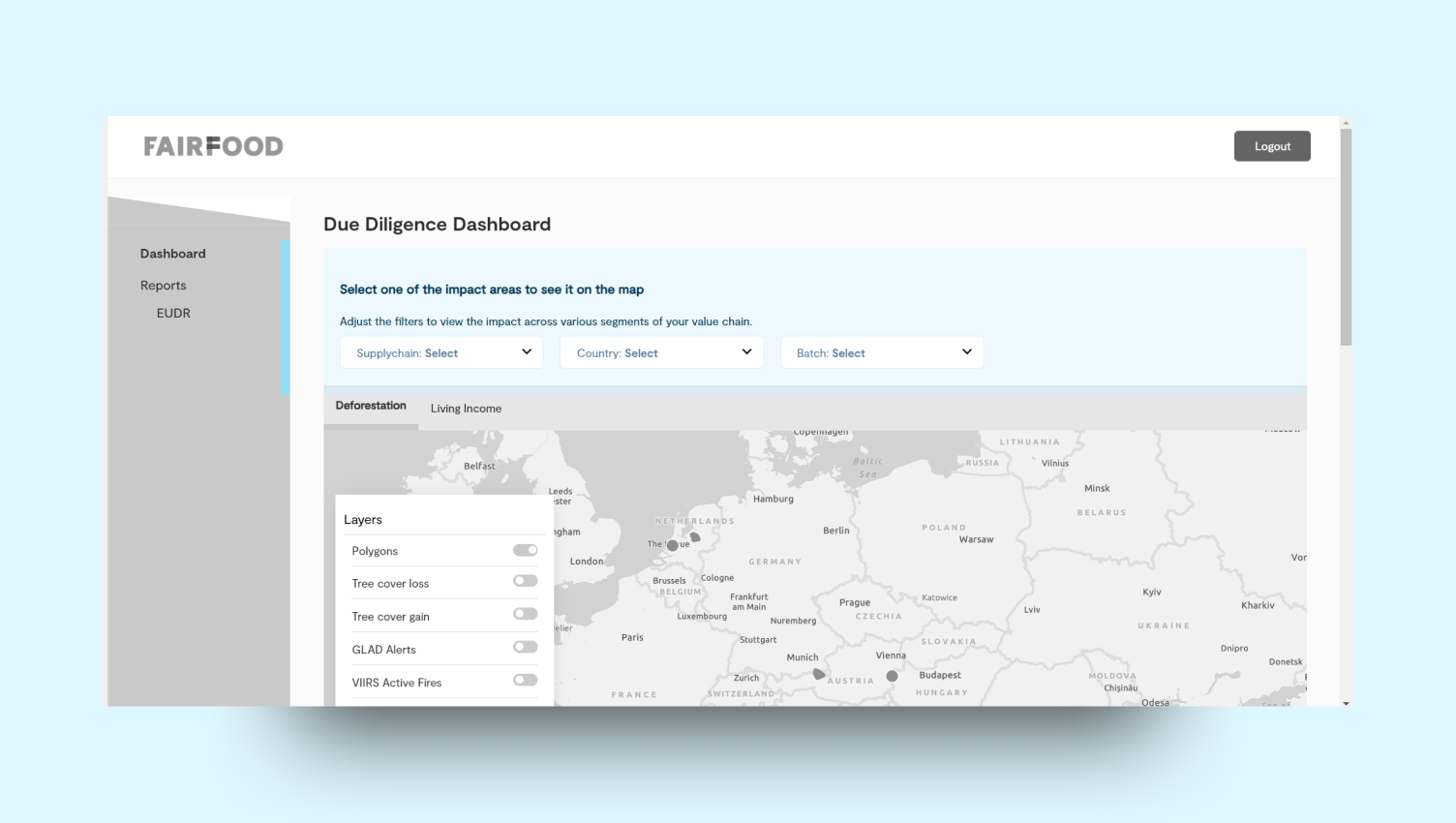
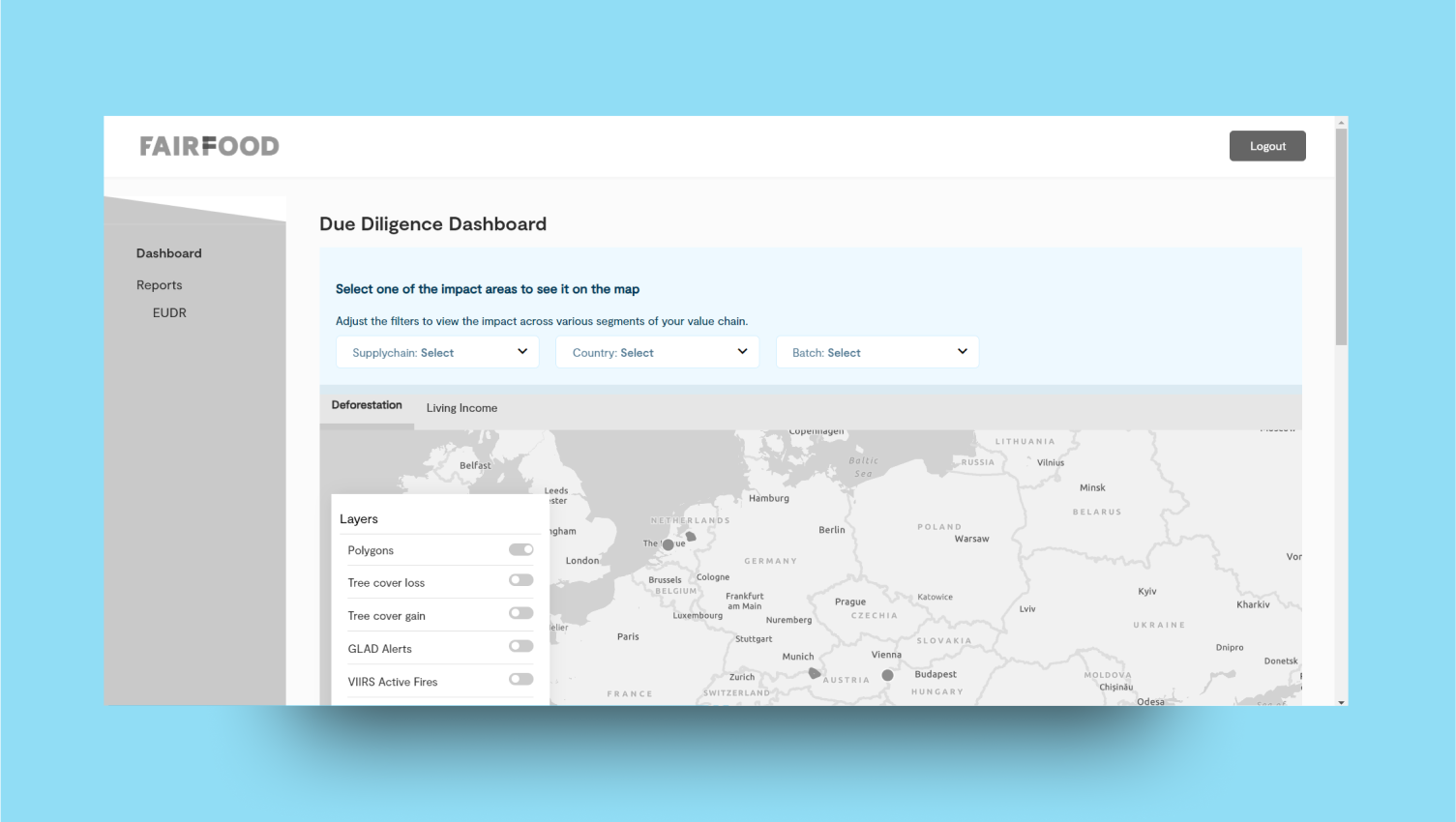
- Users can select impact areas on a map by adjusting filters for supply chain, country, and farmer group.
- This allows flexibility in viewing impacts across different segments of the value chain.
- In the Living Income category, users can choose to display values as either the mean or median.
- This feature enables more tailored and precise data analysis.
4
Map
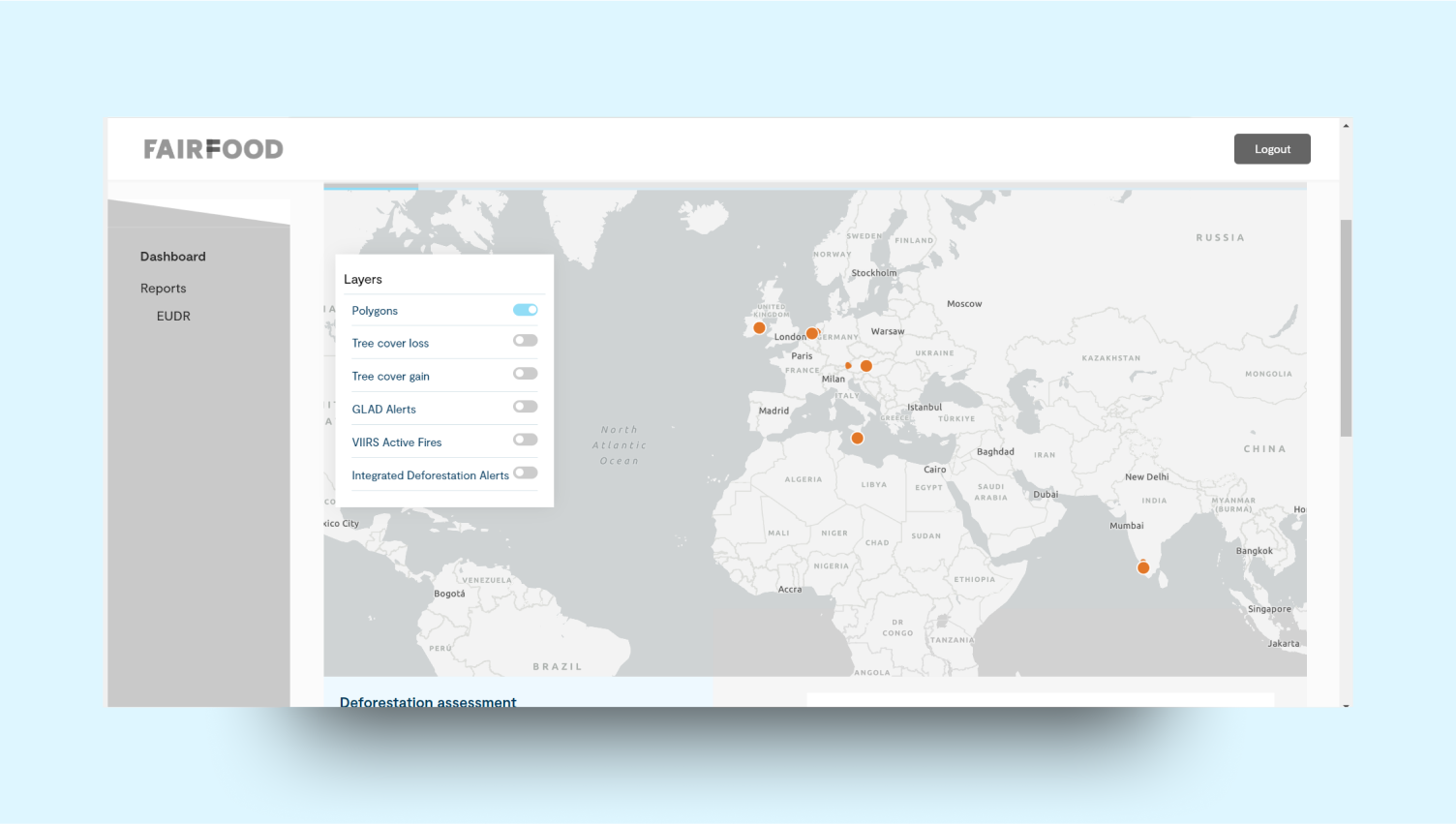
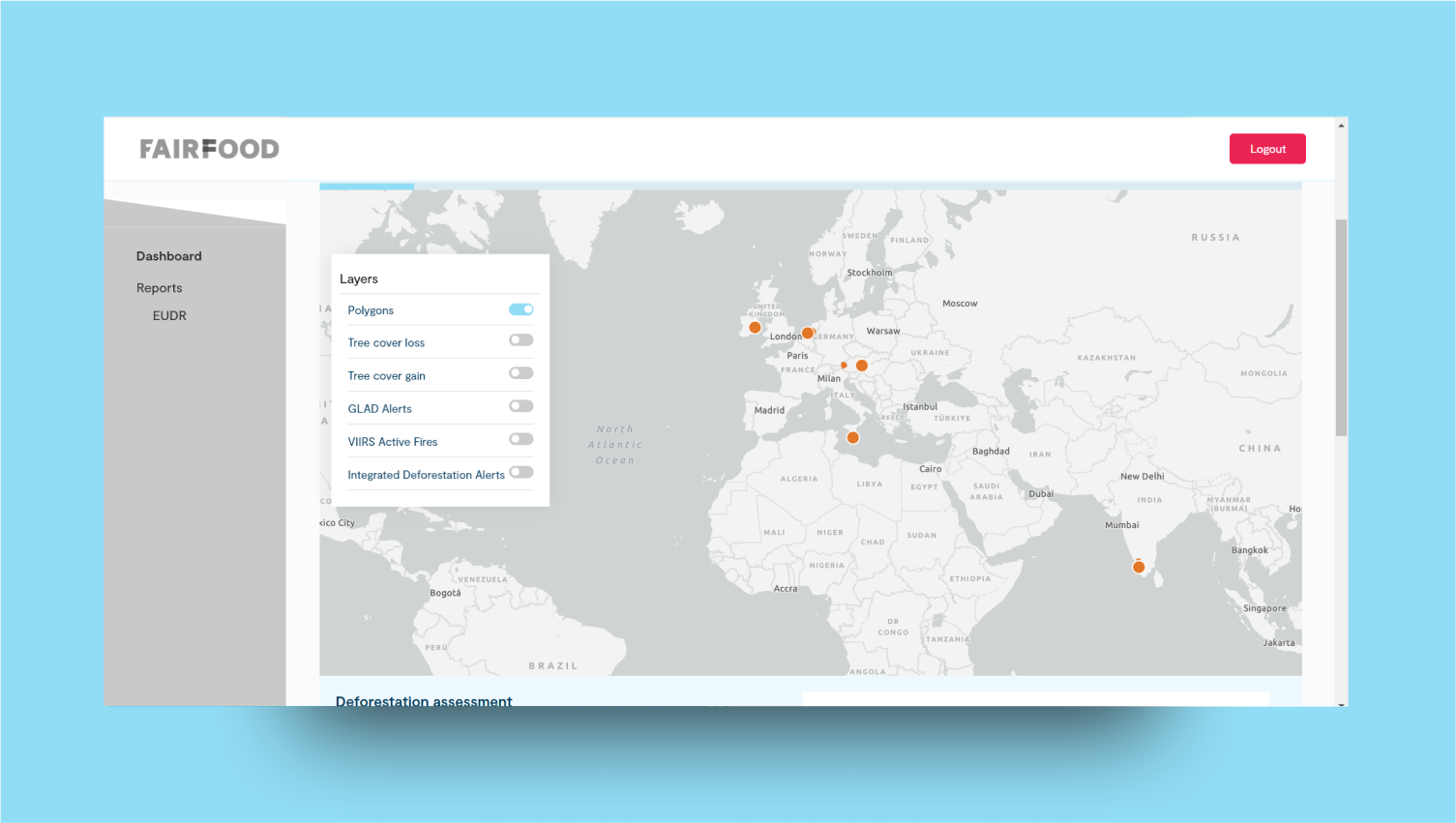 The satellite map report feature enables users to track value ranges across different regions using visual indicators like colors or symbols. It helps to highlight variations in data, making it easier to identify patterns and trends on the map. This tool offers a clear and intuitive way to analyze geographic data for better decision-making.
The satellite map report feature enables users to track value ranges across different regions using visual indicators like colors or symbols. It helps to highlight variations in data, making it easier to identify patterns and trends on the map. This tool offers a clear and intuitive way to analyze geographic data for better decision-making.5
Assessment section
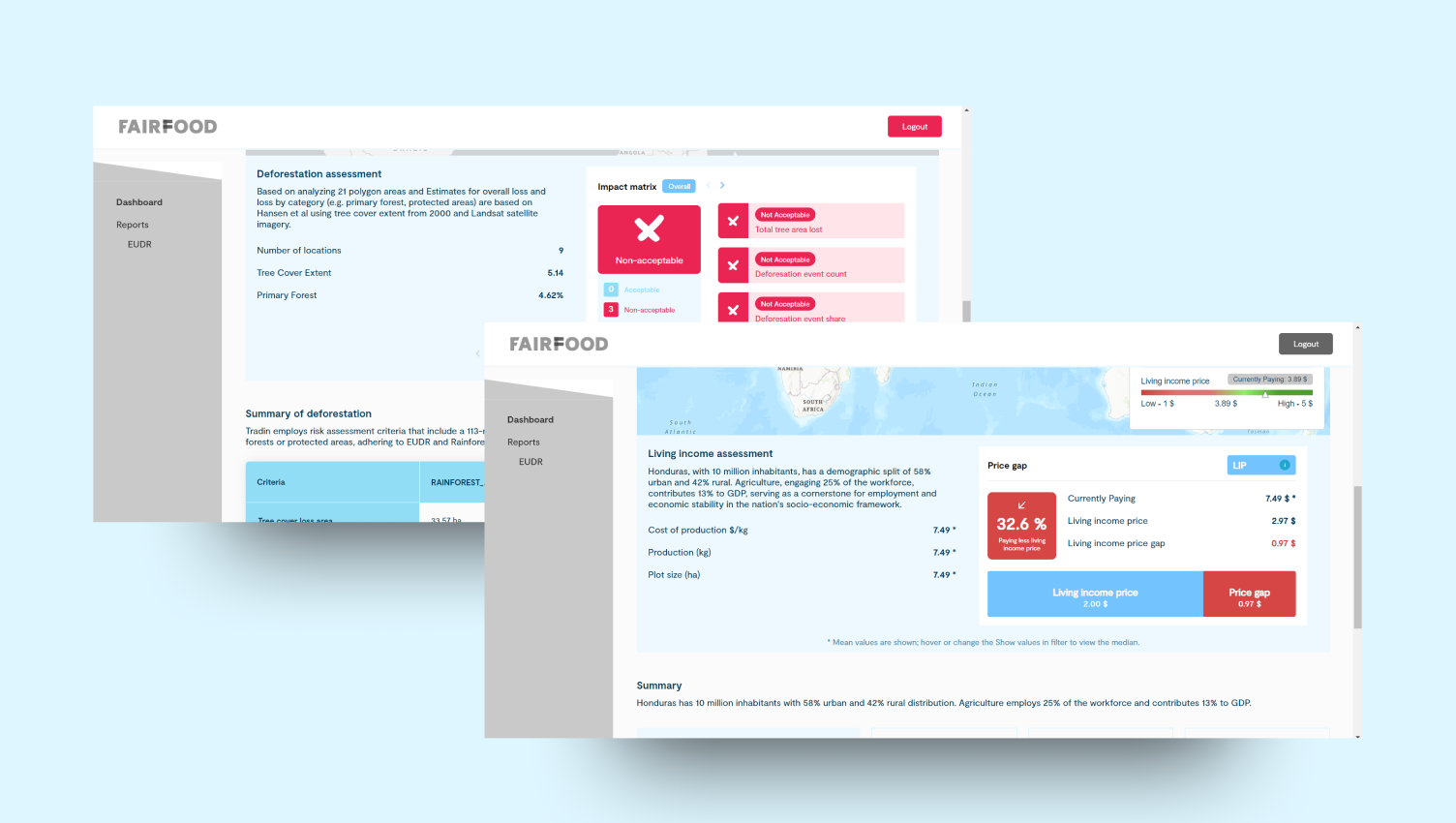
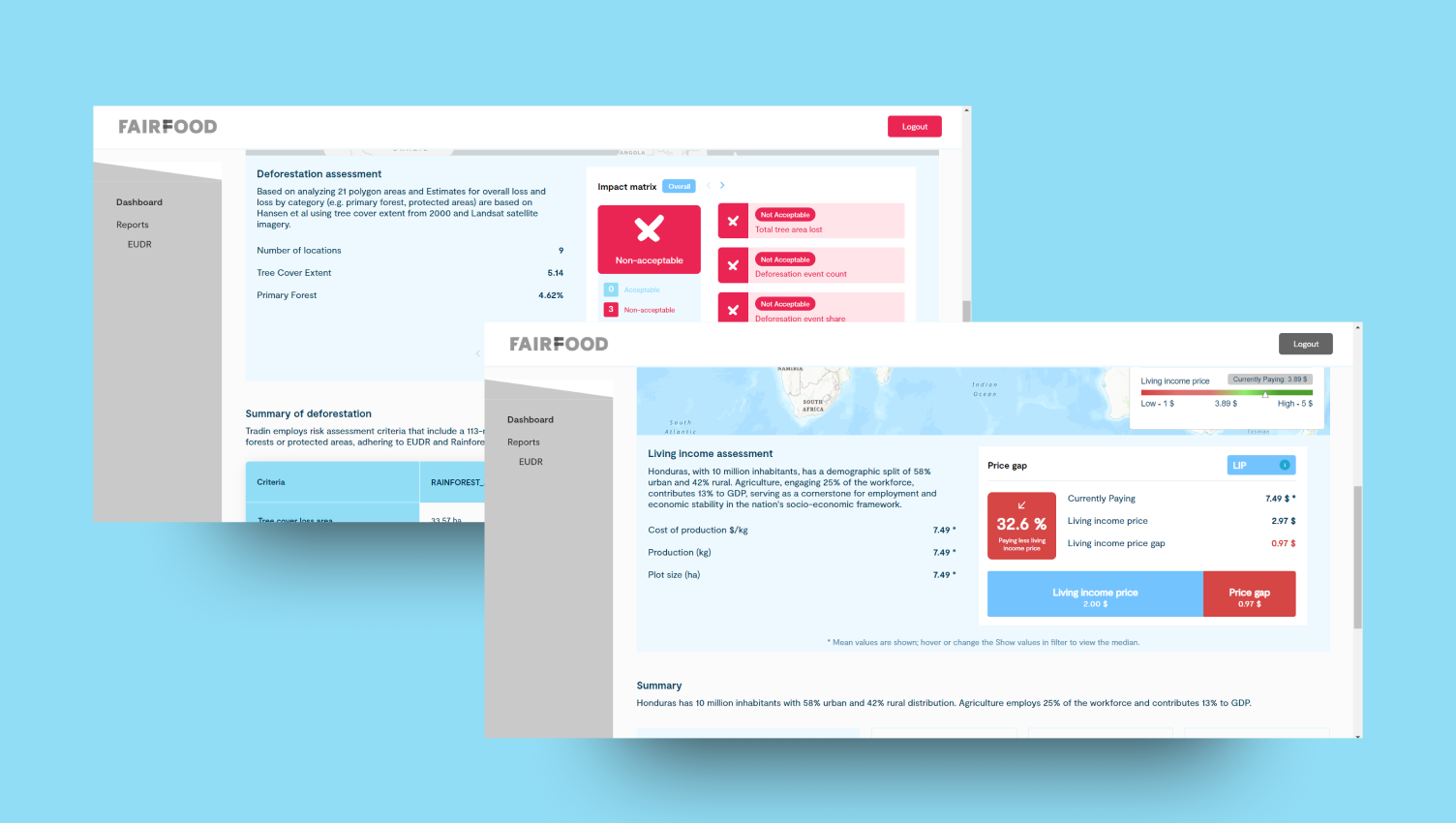 The assessment section within each pillar delivers the evaluation values, offering a detailed insight into the performance or status of each component. This section helps users understand specific metrics and their implications for comprehensive analysis.
The assessment section within each pillar delivers the evaluation values, offering a detailed insight into the performance or status of each component. This section helps users understand specific metrics and their implications for comprehensive analysis.6
Deforestation assessment
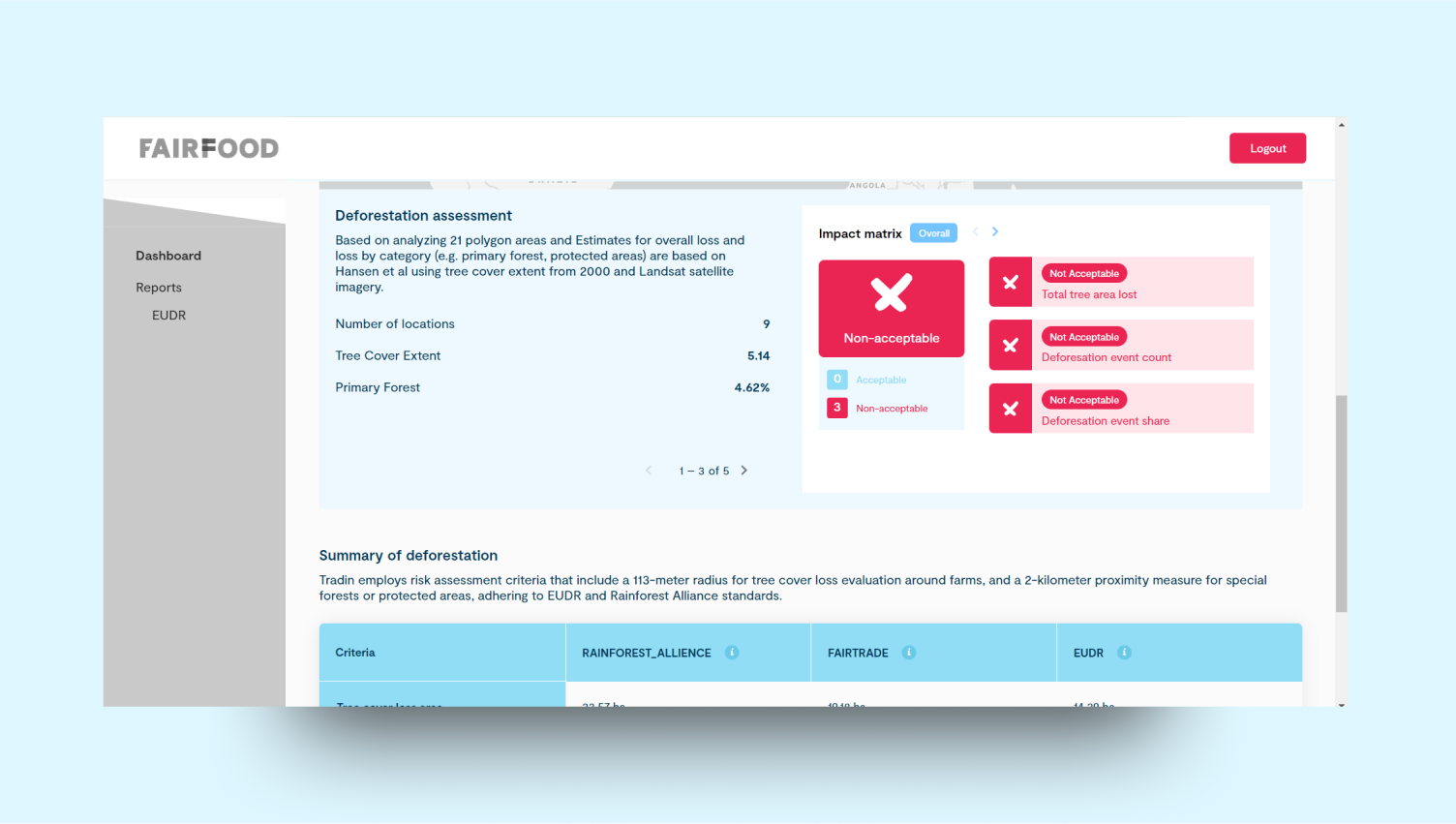
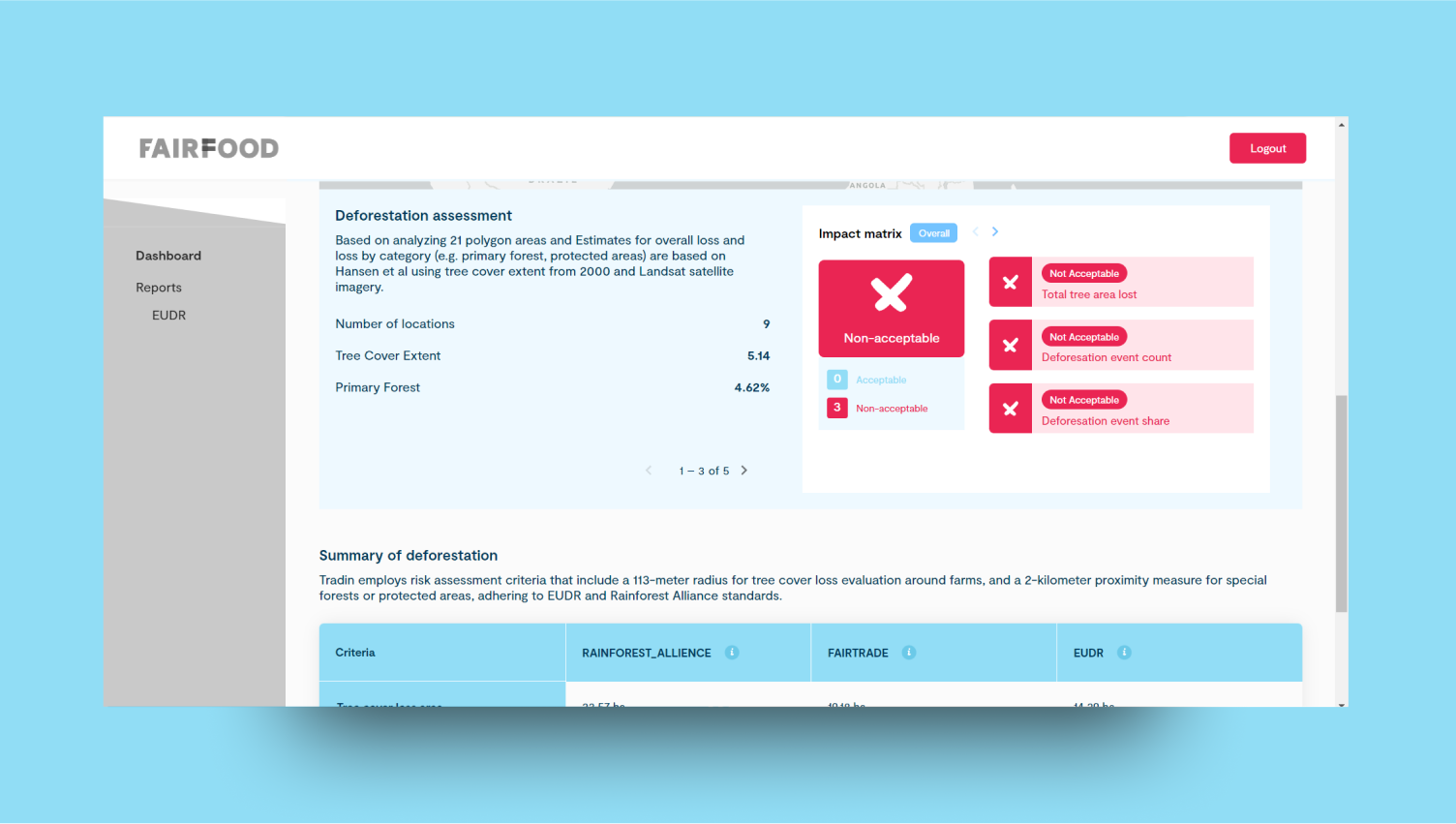 This section offers a deforestation assessment based on data analysis of multiple areas using satellite imagery. It evaluates key factors such as tree cover extent and primary forest loss. The impact matrix highlights non-acceptable outcomes across several indicators, including total tree area lost, deforestation event frequency, and share, indicating critical environmental issues in the analyzed regions.
This section offers a deforestation assessment based on data analysis of multiple areas using satellite imagery. It evaluates key factors such as tree cover extent and primary forest loss. The impact matrix highlights non-acceptable outcomes across several indicators, including total tree area lost, deforestation event frequency, and share, indicating critical environmental issues in the analyzed regions.7
Living income assessment
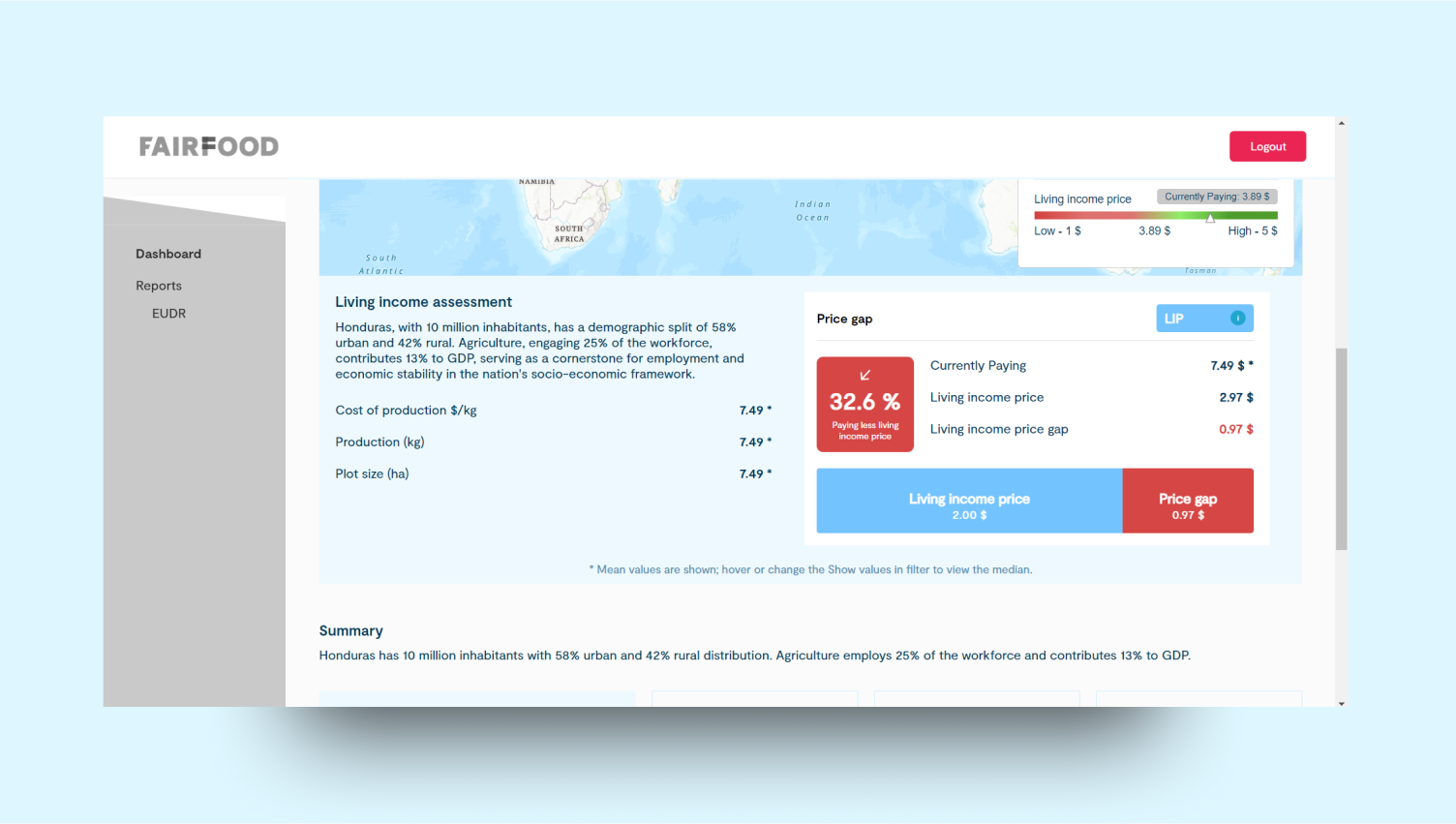
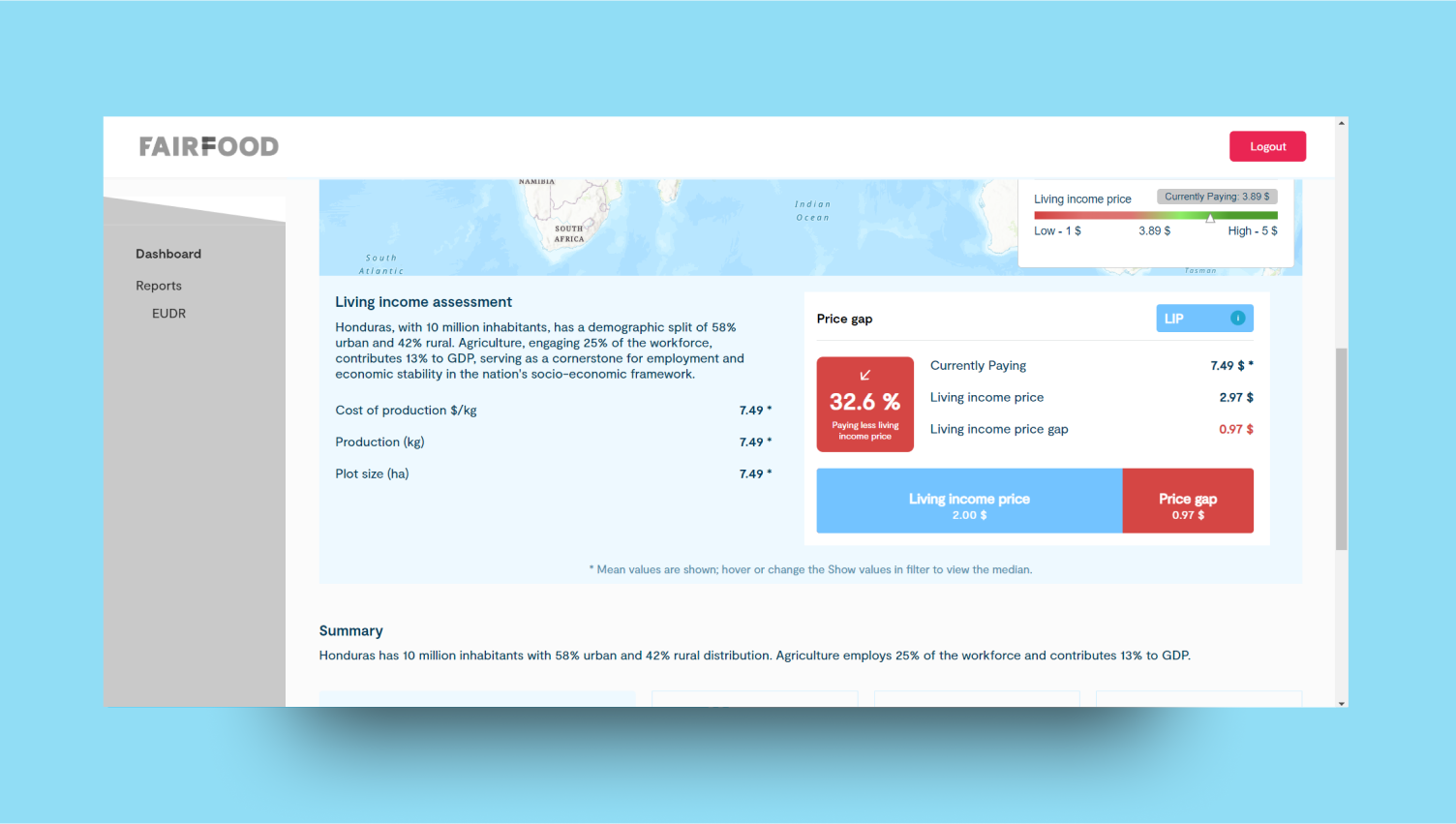 This section provides a living income assessment, focusing on the socio-economic conditions of a country with a significant agricultural workforce. It highlights the gap between current payments and the required living income price for agricultural production. The analysis shows a substantial price gap, indicating that workers are being paid less than what is necessary to achieve a sustainable living income.
This section provides a living income assessment, focusing on the socio-economic conditions of a country with a significant agricultural workforce. It highlights the gap between current payments and the required living income price for agricultural production. The analysis shows a substantial price gap, indicating that workers are being paid less than what is necessary to achieve a sustainable living income.8
Summary section
The summary section consolidates key evaluation values from each pillar, providing an overview of overall performance. It highlights critical metrics and their implications, offering a concise and comprehensive snapshot for effective analysis and decision-making.Deforestation Summary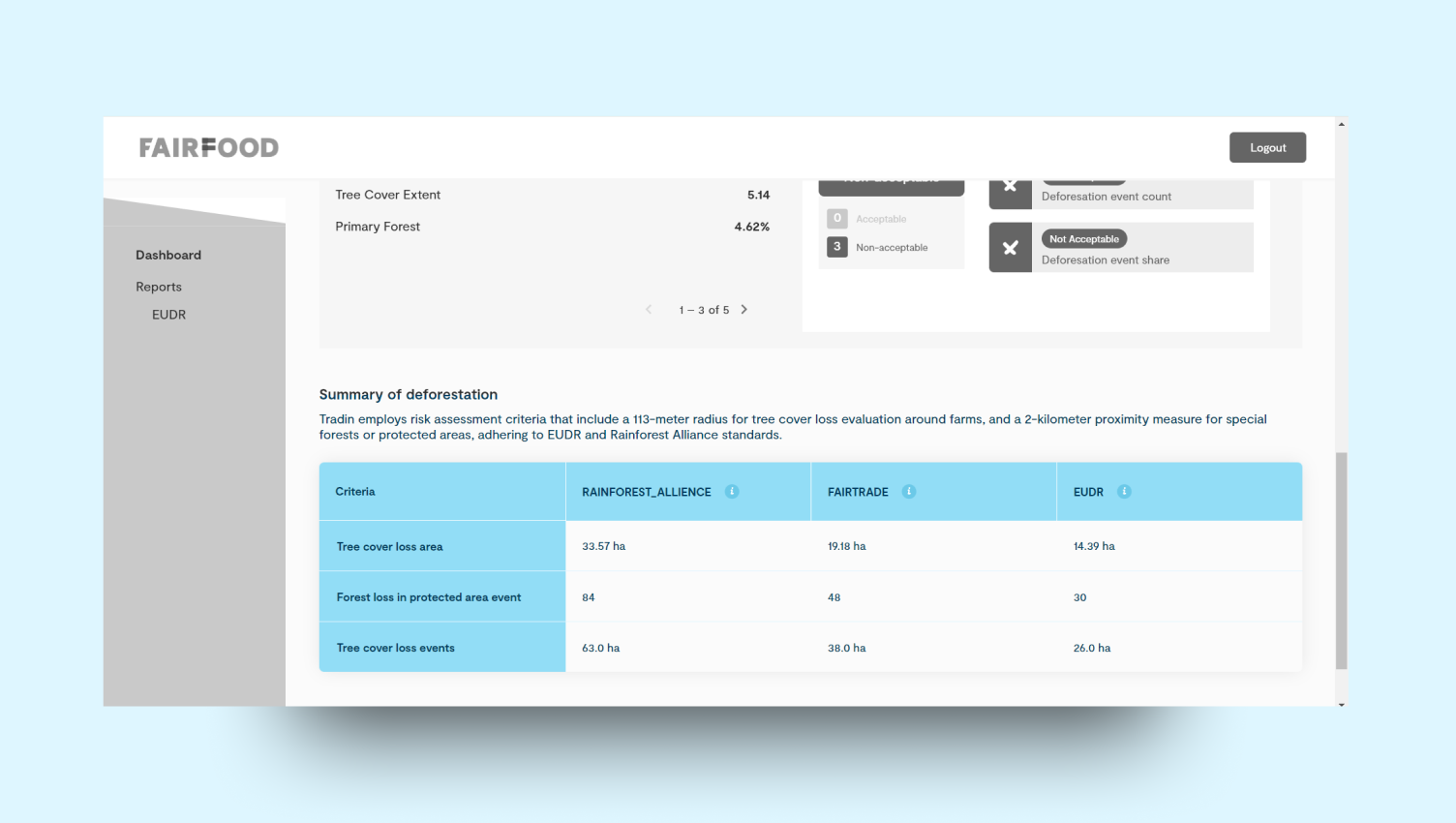
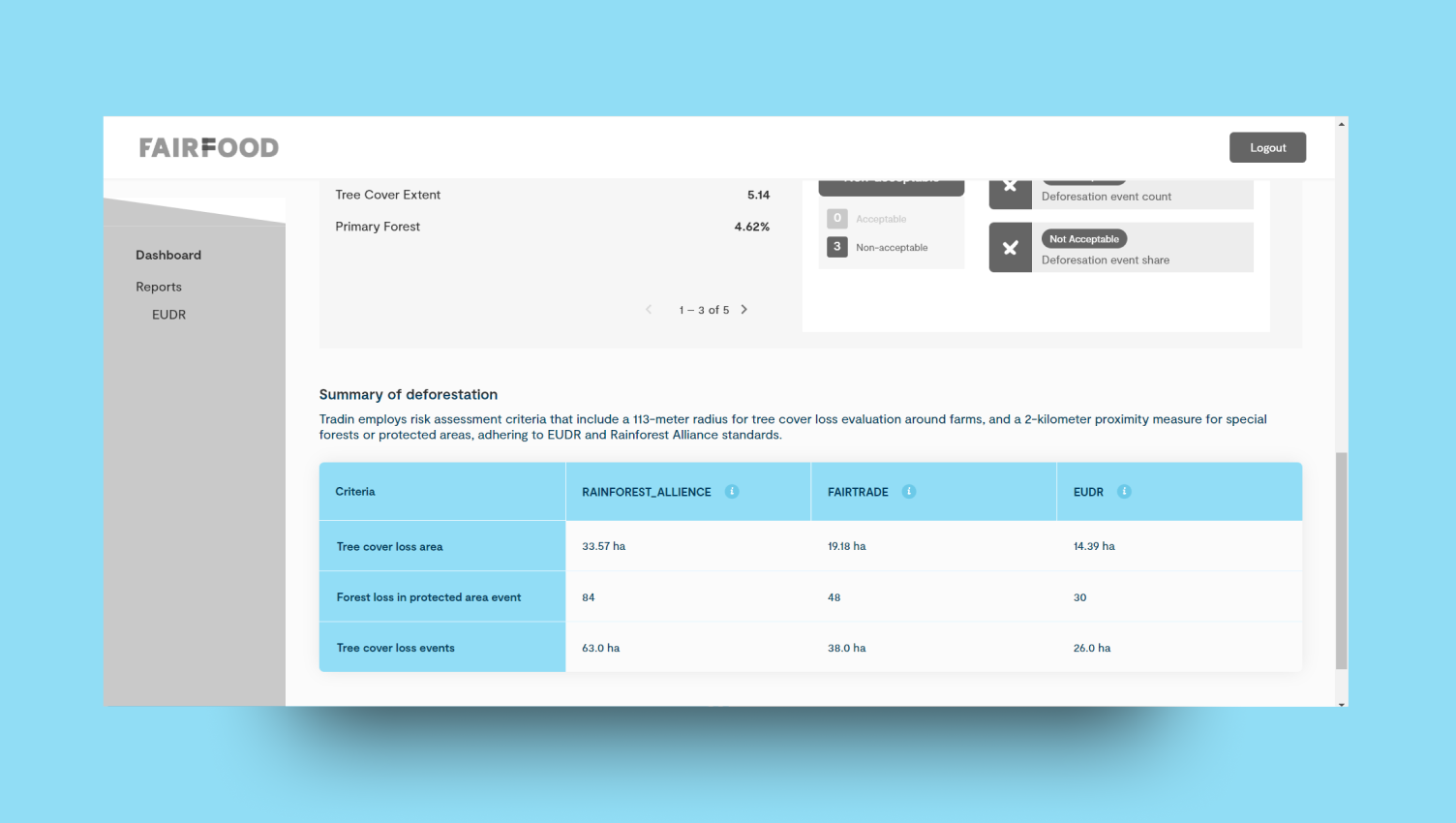 This section provides an overview of how assesses deforestation risks. It follows specific standards such as the EU Deforestation Regulation (EUDR) and Rainforest Alliance guidelines. Measures tree cover loss within a 113-meter radius around farms and monitors protected areas within a 2-kilometer proximity. Key indicators include the total area of tree cover loss, the number of events leading to deforestation, and losses in protected areas. These assessments help identify the impact across various certification schemes like Rainforest Alliance, Fairtrade, and EUDR.Living income assessment
This section provides an overview of how assesses deforestation risks. It follows specific standards such as the EU Deforestation Regulation (EUDR) and Rainforest Alliance guidelines. Measures tree cover loss within a 113-meter radius around farms and monitors protected areas within a 2-kilometer proximity. Key indicators include the total area of tree cover loss, the number of events leading to deforestation, and losses in protected areas. These assessments help identify the impact across various certification schemes like Rainforest Alliance, Fairtrade, and EUDR.Living income assessment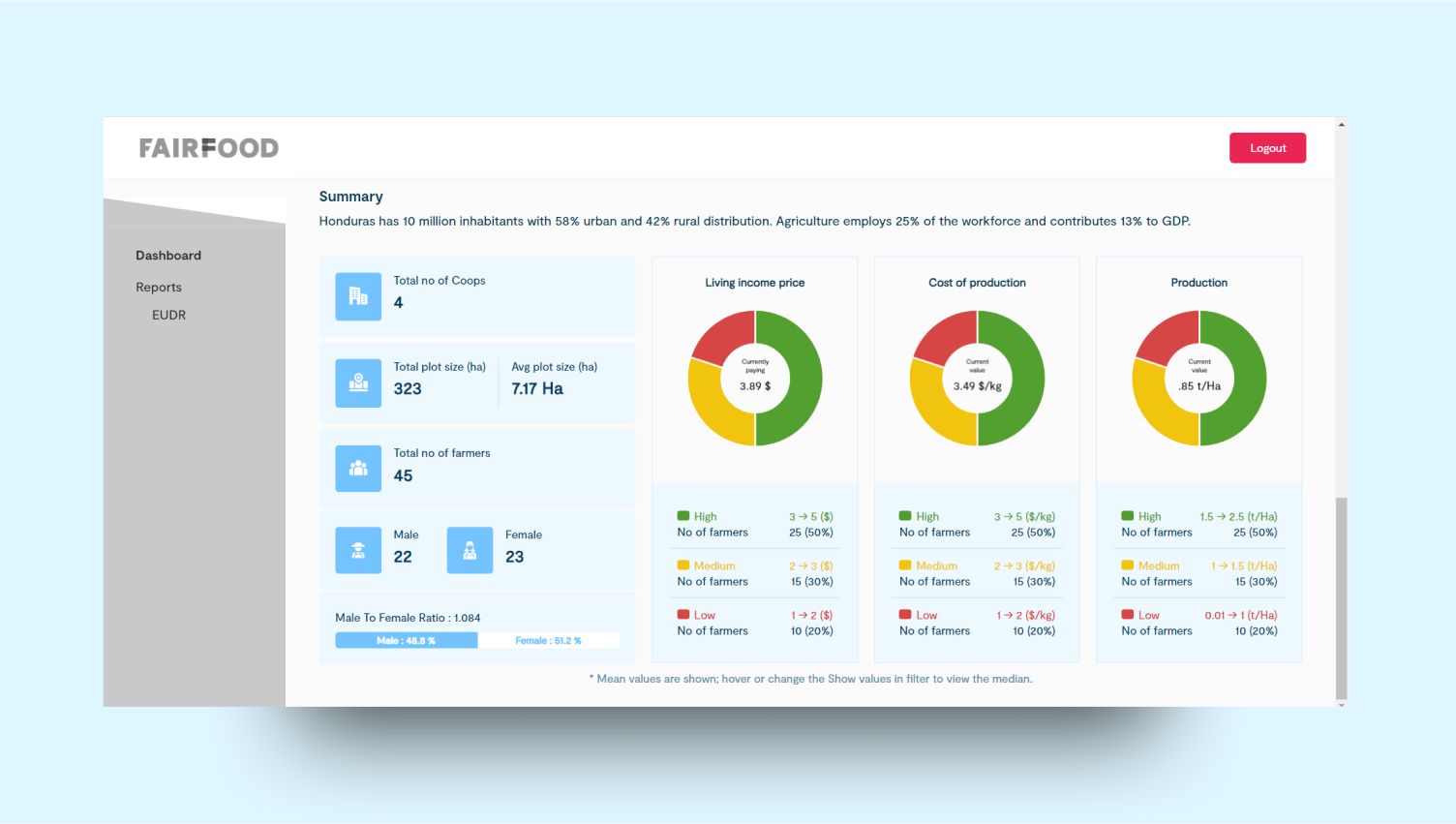
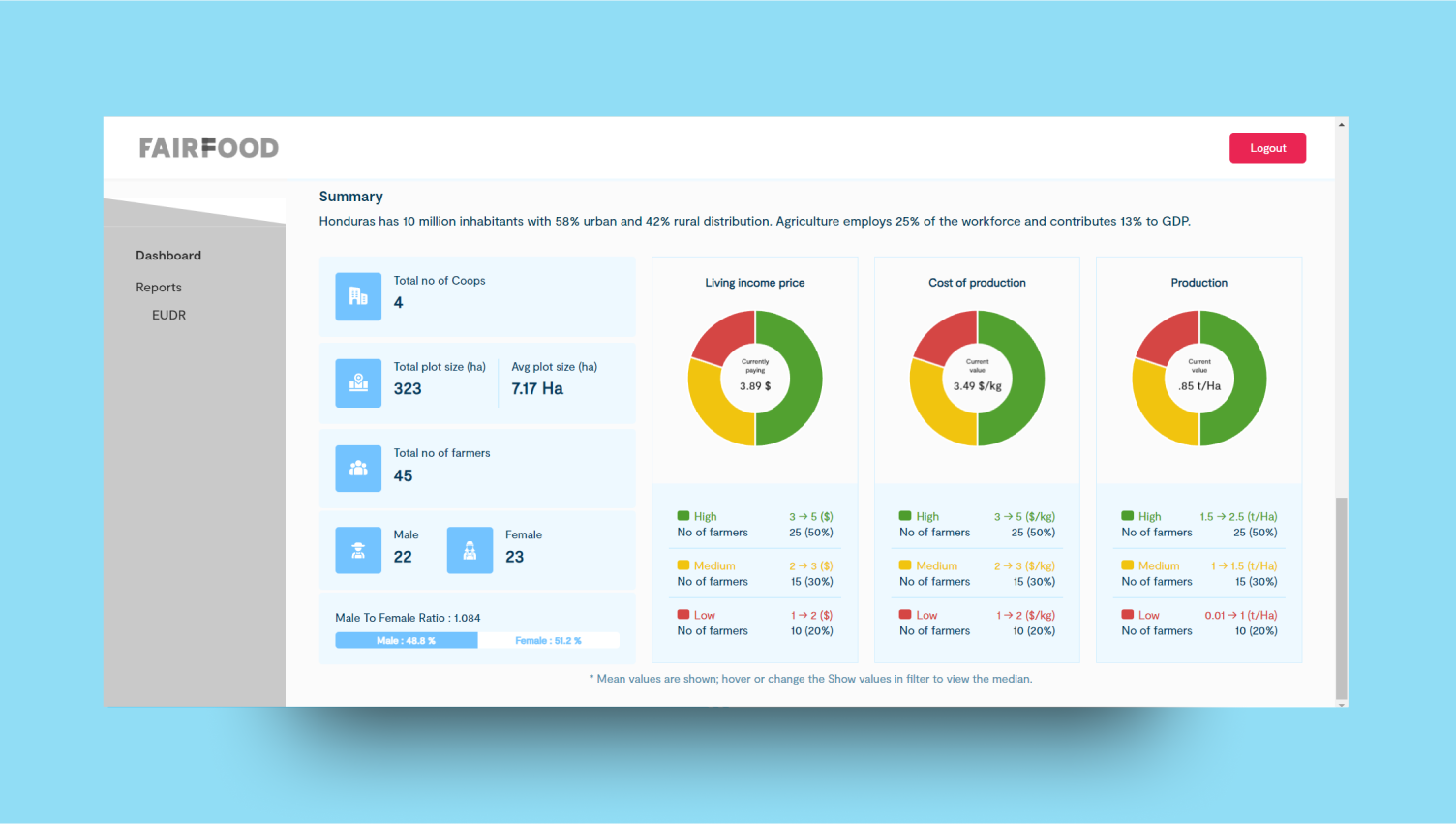 This section presents a demographic and agricultural overview of Honduras. It highlights the country’s population distribution, with a significant portion engaged in agriculture, which contributes notably to the GDP. Key metrics include the number of agricultural cooperatives, the total and average farm plot sizes, and the gender distribution of farmers. It also reviews essential financial indicators like living income prices, production costs, and yield rates. Farmers are categorized based on economic performance, with groups defined by income, production costs, and productivity levels.
This section presents a demographic and agricultural overview of Honduras. It highlights the country’s population distribution, with a significant portion engaged in agriculture, which contributes notably to the GDP. Key metrics include the number of agricultural cooperatives, the total and average farm plot sizes, and the gender distribution of farmers. It also reviews essential financial indicators like living income prices, production costs, and yield rates. Farmers are categorized based on economic performance, with groups defined by income, production costs, and productivity levels.

 This section provides an overview of how assesses deforestation risks. It follows specific standards such as the EU Deforestation Regulation (EUDR) and Rainforest Alliance guidelines. Measures tree cover loss within a 113-meter radius around farms and monitors protected areas within a 2-kilometer proximity. Key indicators include the total area of tree cover loss, the number of events leading to deforestation, and losses in protected areas. These assessments help identify the impact across various certification schemes like Rainforest Alliance, Fairtrade, and EUDR.Living income assessment
This section provides an overview of how assesses deforestation risks. It follows specific standards such as the EU Deforestation Regulation (EUDR) and Rainforest Alliance guidelines. Measures tree cover loss within a 113-meter radius around farms and monitors protected areas within a 2-kilometer proximity. Key indicators include the total area of tree cover loss, the number of events leading to deforestation, and losses in protected areas. These assessments help identify the impact across various certification schemes like Rainforest Alliance, Fairtrade, and EUDR.Living income assessment
 This section presents a demographic and agricultural overview of Honduras. It highlights the country’s population distribution, with a significant portion engaged in agriculture, which contributes notably to the GDP. Key metrics include the number of agricultural cooperatives, the total and average farm plot sizes, and the gender distribution of farmers. It also reviews essential financial indicators like living income prices, production costs, and yield rates. Farmers are categorized based on economic performance, with groups defined by income, production costs, and productivity levels.
This section presents a demographic and agricultural overview of Honduras. It highlights the country’s population distribution, with a significant portion engaged in agriculture, which contributes notably to the GDP. Key metrics include the number of agricultural cooperatives, the total and average farm plot sizes, and the gender distribution of farmers. It also reviews essential financial indicators like living income prices, production costs, and yield rates. Farmers are categorized based on economic performance, with groups defined by income, production costs, and productivity levels.9
Intervention sections
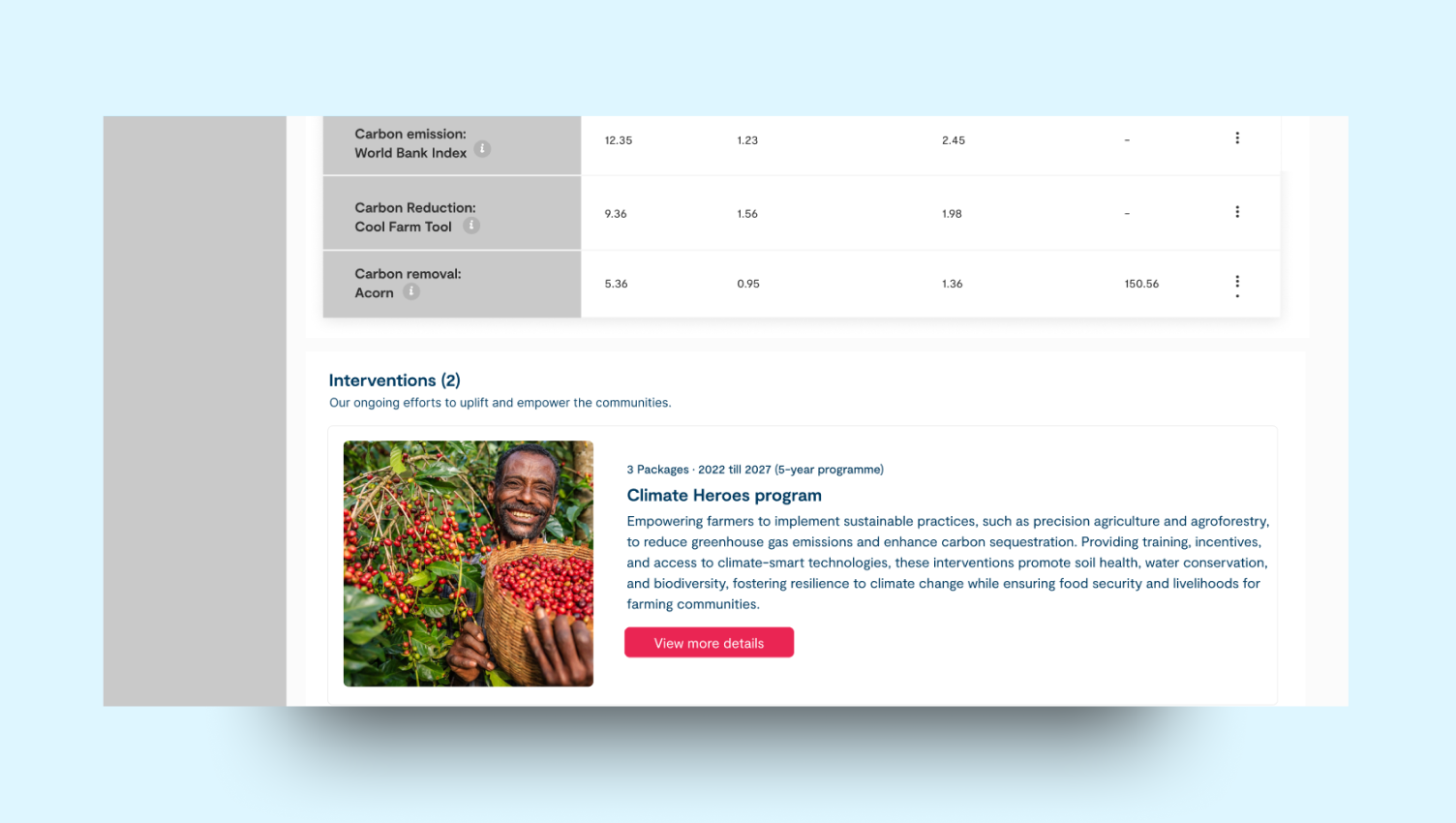
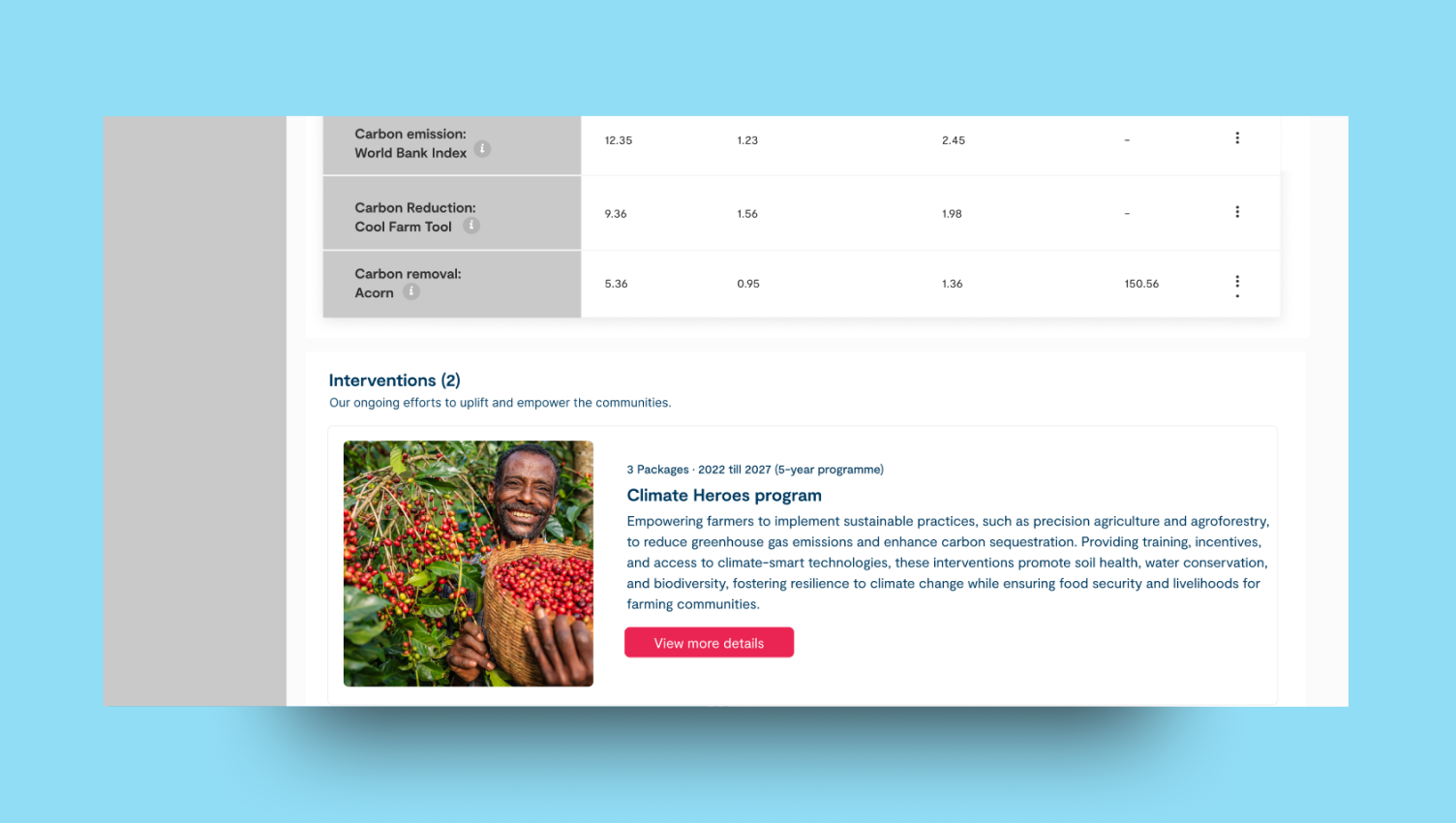 To improve farmers’ outcomes, suggested interventions include training in sustainable farming practices, access to better seeds and tools, and enhanced irrigation techniques. Supporting cooperative structures can boost bargaining power, while providing financial literacy programs and microloans will empower farmers economically. Additionally, promoting agroforestry and crop diversification can enhance resilience to climate change and market fluctuations.
To improve farmers’ outcomes, suggested interventions include training in sustainable farming practices, access to better seeds and tools, and enhanced irrigation techniques. Supporting cooperative structures can boost bargaining power, while providing financial literacy programs and microloans will empower farmers economically. Additionally, promoting agroforestry and crop diversification can enhance resilience to climate change and market fluctuations.